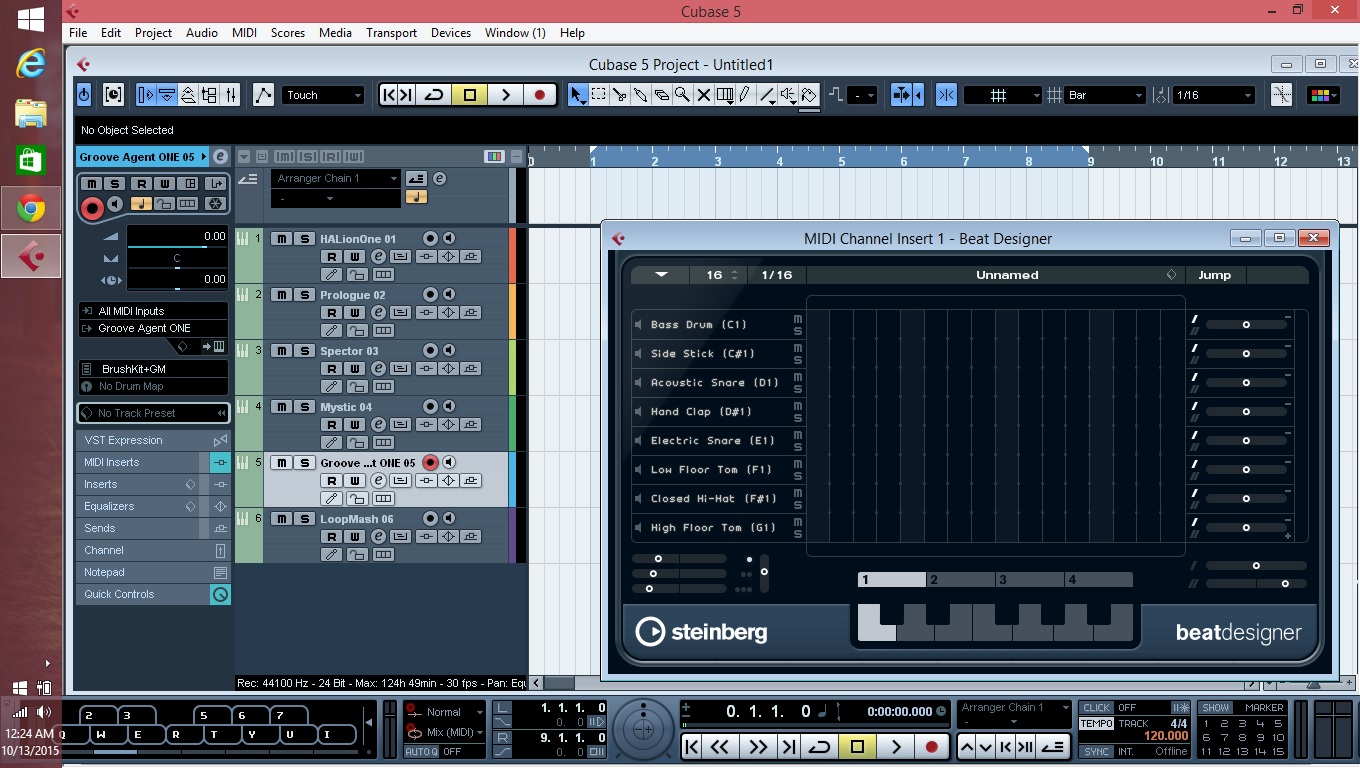
- CUBASE AI DOWNLOAD U22 HOW TO
- CUBASE AI DOWNLOAD U22 DRIVERS
- CUBASE AI DOWNLOAD U22 DRIVER
- CUBASE AI DOWNLOAD U22 SOFTWARE
That’s what I was talking about earlier with DirectSound latency. I’m using DirectSound, and there’s horrible crackling and static from the output.
CUBASE AI DOWNLOAD U22 HOW TO
Then restart your DAW.įor more detailed explanation on using ASIO4ALL in a DAW, see Appual’s guide How to Record Guitar on PC Using Reaper DAW. I’m using ASIO4ALL, but there’s no input / output options in my DAW?Ĭlick “ASIO Configuration” and make sure your input and output devices are actually enabled in the ASIO4ALL client. It works quite good – the latency is not as good as pure ASIO mode, but its much faster than DirectSound. It does this through witchcraft and kernel stream wrapping and lots of other little fancy terms I can’t really explain.
CUBASE AI DOWNLOAD U22 DRIVER
This is a third-party, generic ASIO driver which sort of “tricks” Windows into allowing ASIO-based input, with an alternative output, such as Realtek. Because the input signal is being passed from your audio device to your PC, being mixed in emulation, then output through Realtek ( or whatever your native PC sound is. If you’re playing a guitar, for example, you’ll hear the guitar notes like, 5 seconds after you hit the strings. However, this adds a lot of latency because it passes both layers through the emulation level. You can use DirectSound, which should let you select your ASIO device as the input, and your computer’s native speakers ( Realtek, etc) as the output. How can I use ASIO input and still get PC speaker output?
CUBASE AI DOWNLOAD U22 SOFTWARE
It will not output through your computer speakers on a software level, because your speakers are not part of the mix. TLDR: When using ASIO exclusive mode, you need an external output connected directly to your ASIO hardware device. What would happen if you could do this would be the sound signal would travel back and forth between your audio interface and your PC speakers infinitely, creating the most awful sound known to mankind as it looped back and forth, getting progressively louder and screechier by the second.
CUBASE AI DOWNLOAD U22 DRIVERS
This is not possible, because your computer speakers are not a part of the ASIO drivers on a software level. What you’re basically asking is for the audio signal to travel from your audio device to your PC, be mixed in the DAW, then travel back to your audio device, then travel back to your computer’s speakers. It then sends the signal back to your audio interface, to go through the OUTPUT line. You are sending signal from the audio device to your PC over USB. Remember that ASIO is a hardware-dedicated driver, which exclusively uses the hardware device. Shouldn’t I get audio output from my computer speakers at the same time I’m recording an instrument, using ASIO drivers? My audio device is connected to my PC via USB. To hear audio output from ASIO, you need to connect a cable from the device’s output, to your computer’s input ( or an alternative pair of speakers not connected to your computer). When ASIO is chosen as the audio system, the ASIO-enabled device becomes the input/output source. ASIO Mode: Input detected over USB, can’t select Windows audio ( e.g. Now that we’ve explained the various audio systems, lets troubleshoot some common audio issues when working with DAWs. For example, many USB DACs, audio interfaces, and digital effects pedals have dedicated ASIO drivers available directly from their manufacturers. ASIO is the preferred audio system for input recording if you have a hardware device with its own ASIO drivers.


So if you have a DAW open in WASAPI mode, you will not hear any audio from a YouTube video in Google Chrome – because WASAPI mode in the DAW has taken exclusive control of the audio driver. WASAPI: This is similar to DirectSound, except that it uses an “Exclusive” mode, which means that whatever app you’re using WASAPI mode in will take complete control of the audio driver.WDM Kernel Streaming: Another ancient legacy audio mode that is a little less CPU intensive than WaveOut, but should be avoided.



 0 kommentar(er)
0 kommentar(er)
